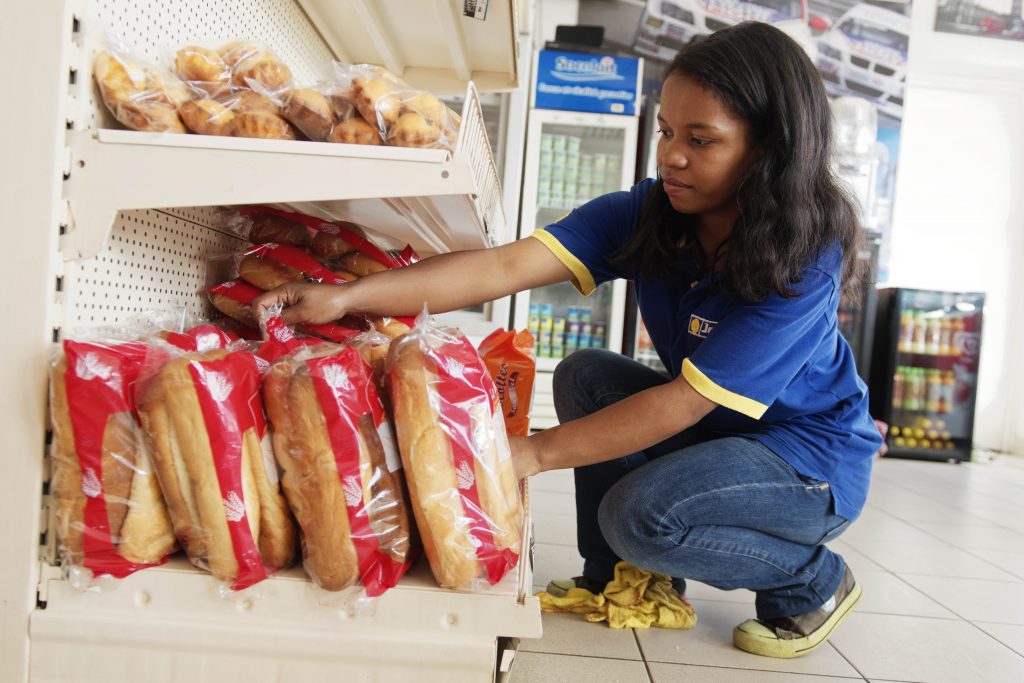The transition into adulthood is an exciting time for many young women and men, bringing with it the prospect of social and economic independence. However, finding employment remains difficult for many youth, especially for young women.
The school-to-work transition indicators have hence been designed to give a more detailed classification and help understand better young people’s transition path in the labour market.
The school-to-work transition stages indicator classifies youth into three groups according to their current state:
– Transited
– In transition
– Transition not yet started
An analysis of the school-to-work transition for 60 countries highlights that young men are more likely to complete the transition process.
In almost all countries with available data, the share of young men who successfully transited into employment exceeds that of young women, often by a wide margin. The largest gender gaps were found in Pakistan (34%), Fiji (26%), and Guyana (23%).
The data also show that in almost all countries, young women are less likely than young men to have begun their transition into the labour market. More than 80 per cent of women had not started their transition yet in Pakistan, Timor-Leste, and Mauritania, while the shares for their male counterparts were much lower.
The significant differences by sex suggest that women face additional hurdles in their labour market transition, either at the end of their education or during their studies.
These differences may be explained – at least partially – by persistent gender gaps in access to decent jobs. In some parts of the world, young women’s access to the labour market continues to be limited, leading to large shares of women remaining out of the labour force altogether. It also happens that in many countries young women tend to remain in education longer than young men – possibly also as a consequence of their more limited labour market opportunities – which can delay their entry into the labour market.
Our new indicators on school-to-work transition stages can be further broken down to better understand youth transitions. Youth in transition, the ones who have begun the transition process but who have not yet completed it, are broken down into those who are studying and in the labour force, those who are unemployed and not studying, those working in a non-satisfactory, temporary job or non-satisfactory self-employment, and non-students outside the labour force with a desire to join the labour market in the future.
Among young people still in transition, the pattern varies greatly across countries and tends to depend on national income level. In low-income countries, the two forms that dominate are the shares of youth in a non-stable or non-satisfactory employment, and the shares of youth in the potential labour force. In Malawi, for instance, these two groups represent over 87 per cent of the youth population in transition.
Conversely, the two dominating forms in high-income countries are the shares of students in the labour force and the shares of unemployed school leavers. In Iceland and in the Netherlands, these two groups account for over 95 per cent of the youth population in transition.
For more details, check out our latest issue of Spotlight on Work Statistics – From school to work: An analysis of youth labour market transitions
YouthSTATS, a partnership between the ILO and the Mastercard Foundation
The Mastercard Foundation has supported the ILO in creating a new, regularly updated dataset, called YouthSTATS, now available on ILOSTAT. The dataset was first produced by the ILO as part of its partnership with the Mastercard Foundation “Work4Youth” project, which concluded in 2014. Primarily composed of youth labour indicators derived from the school-to-work transition surveys, the dataset now benefits from the ILO’s stock of harmonized labour force survey microdatasets. It will serve as a central repository of international youth labour statistics.
Author
-

Quentin Mathys
Quentin is a labour statistician in the Data Production and Analysis Unit of the ILO Department of Statistics. His time is dedicated to microdata processing and analysing labour market indicators.












